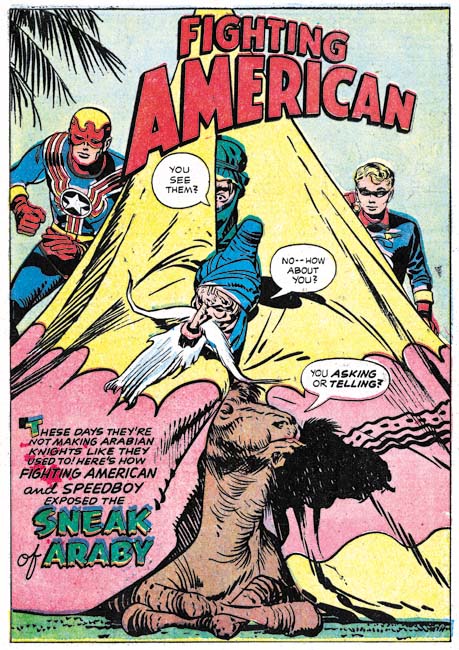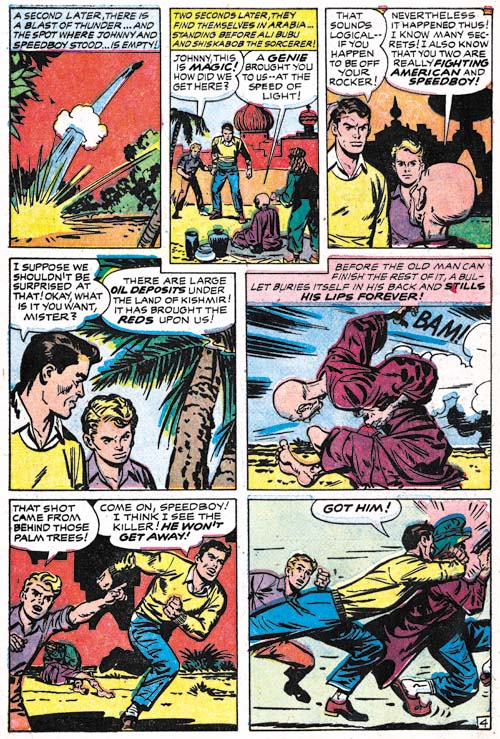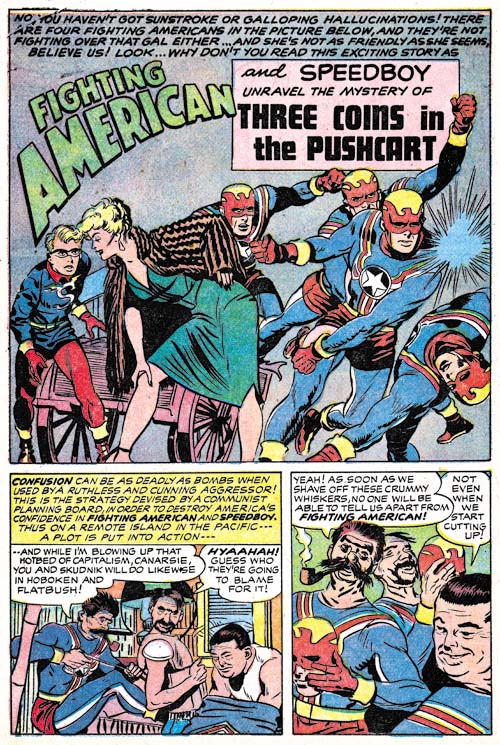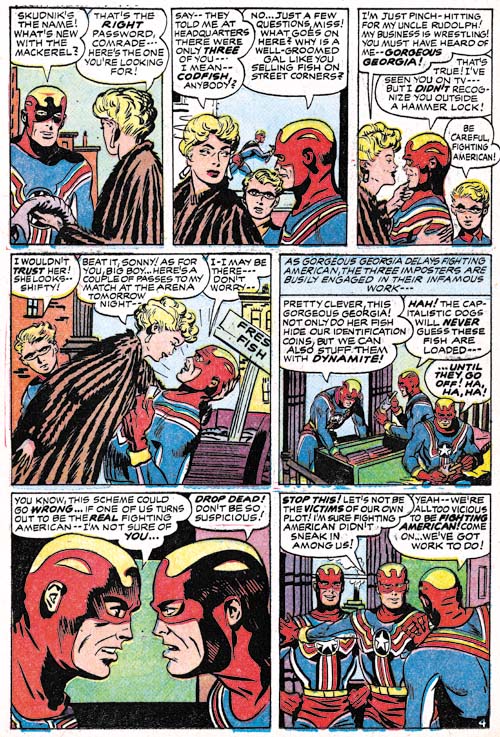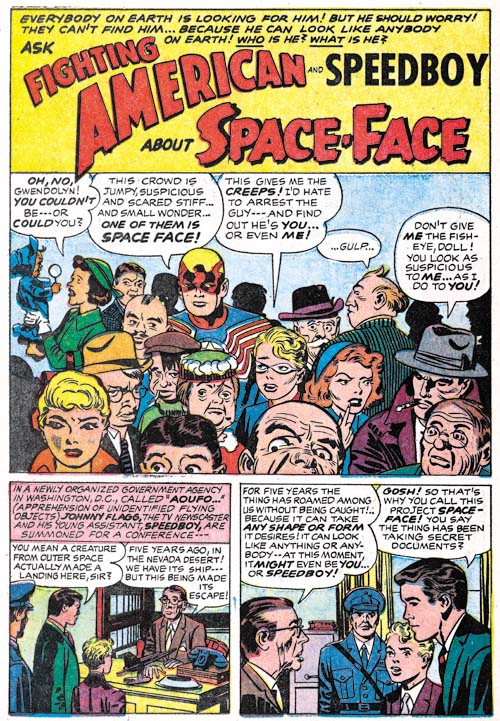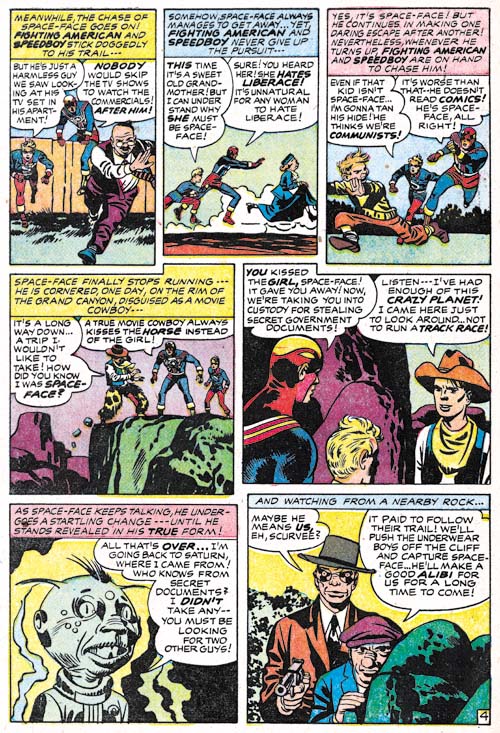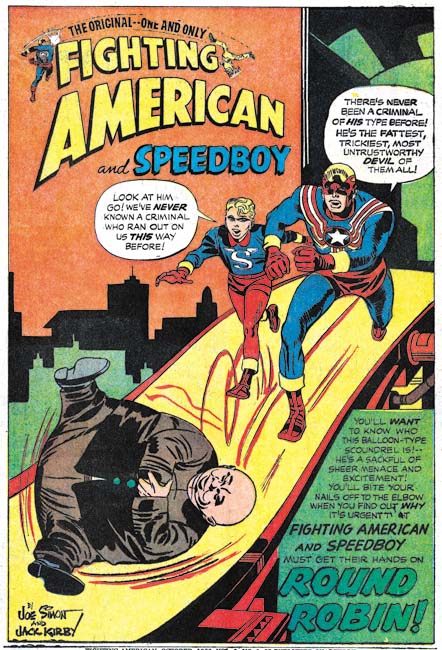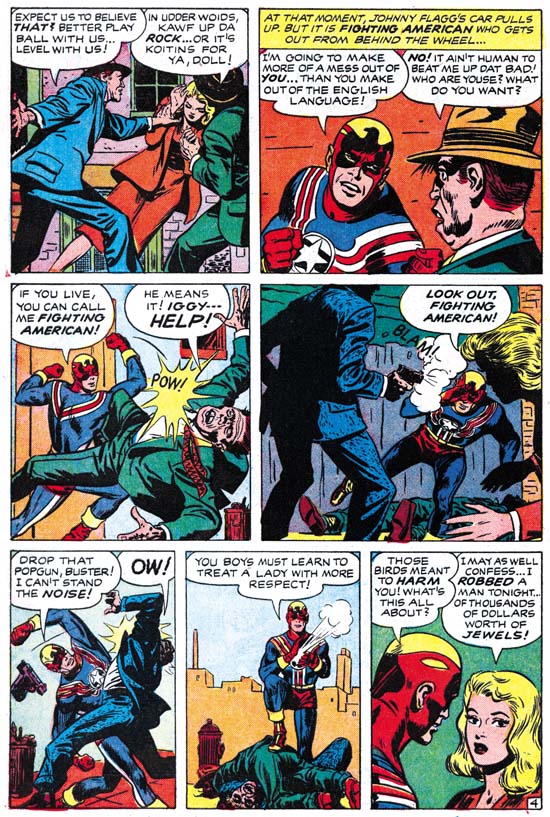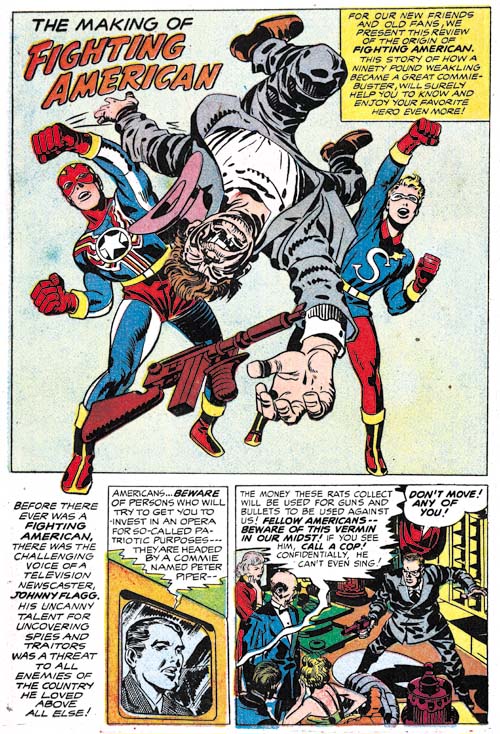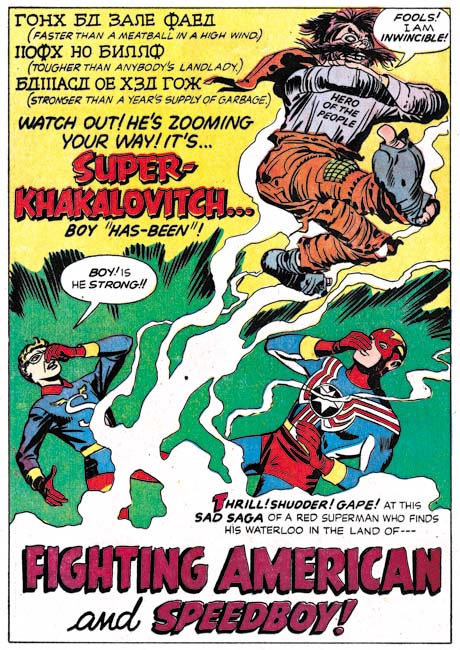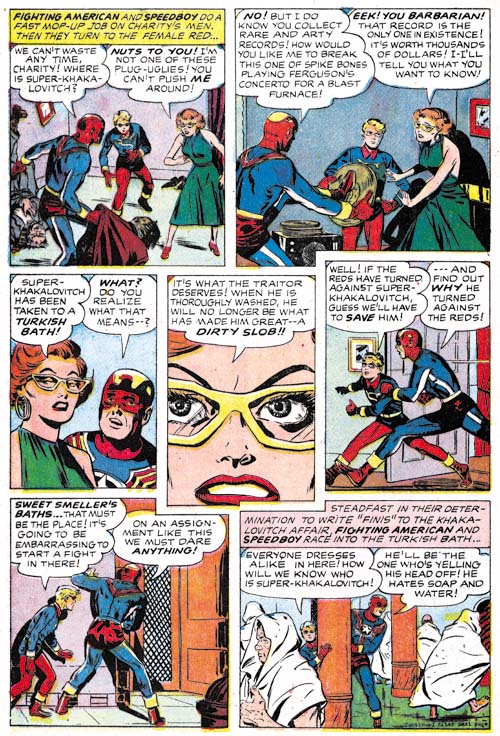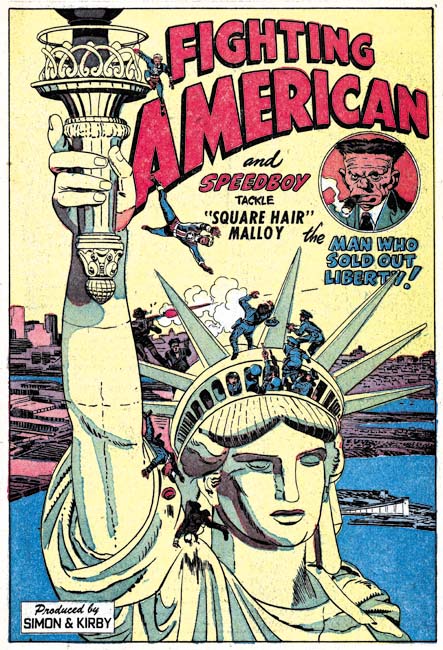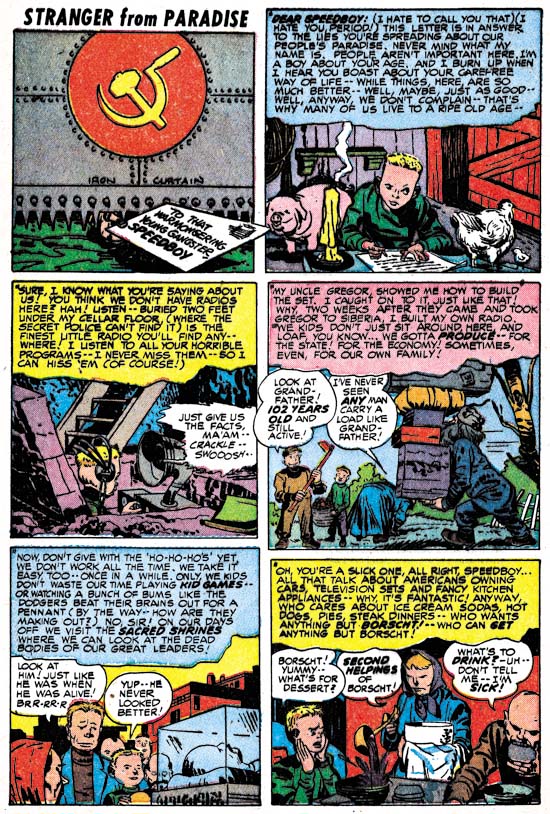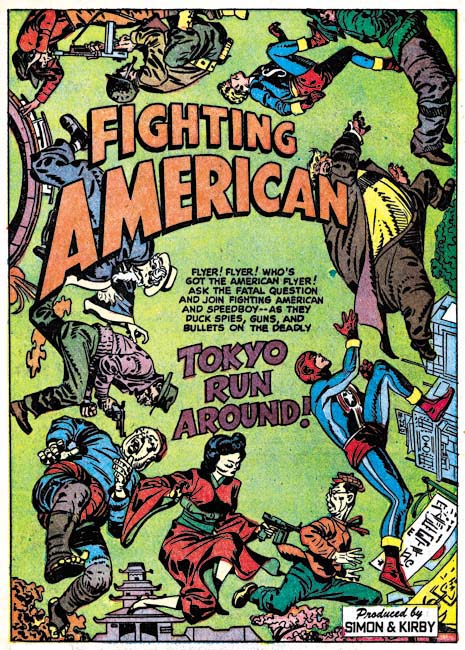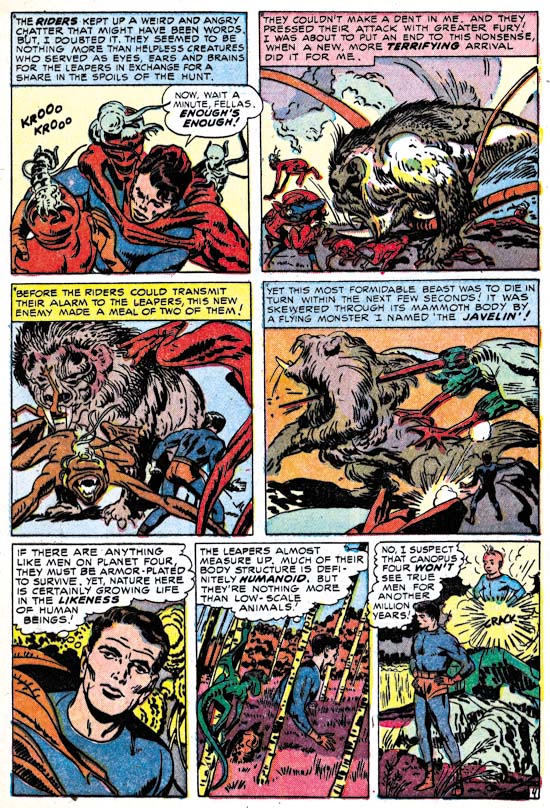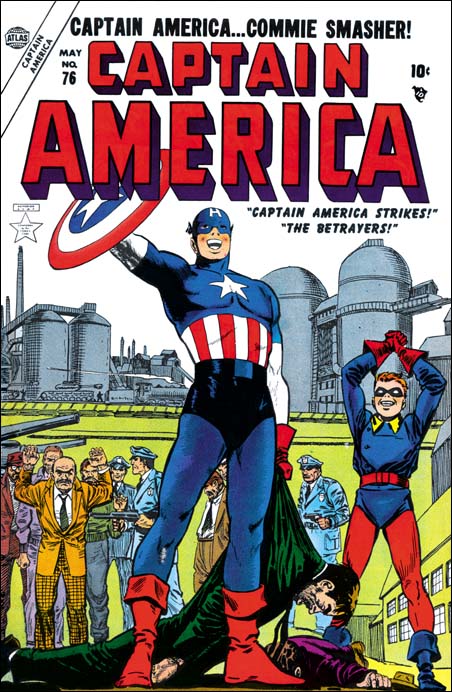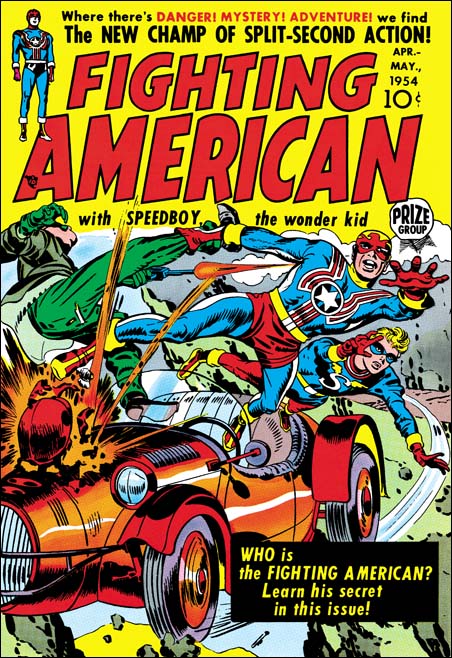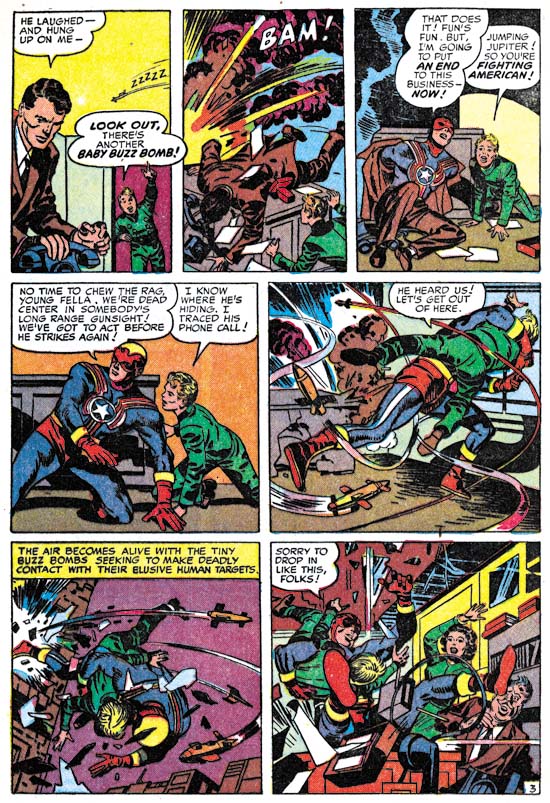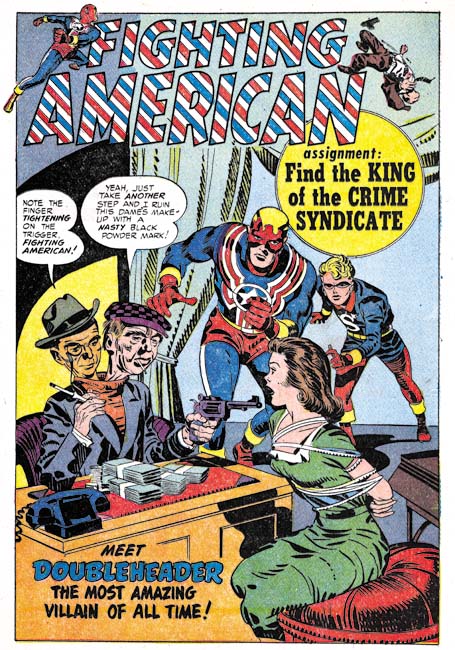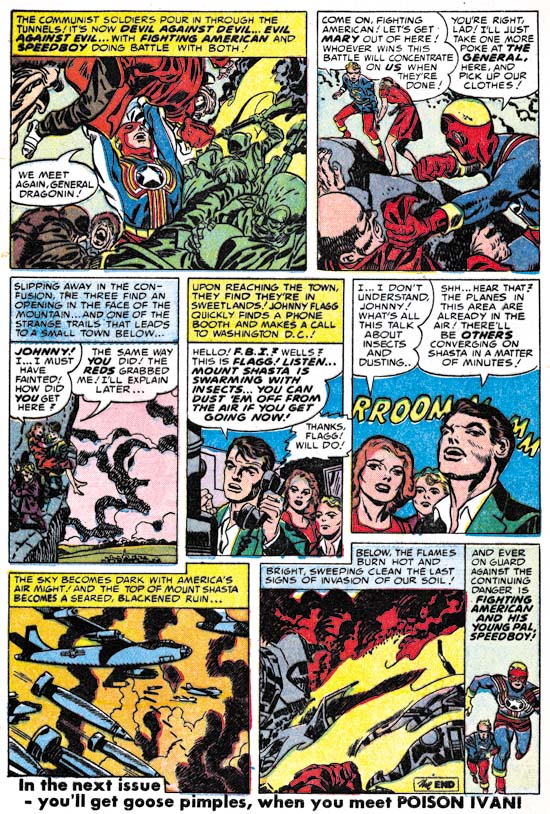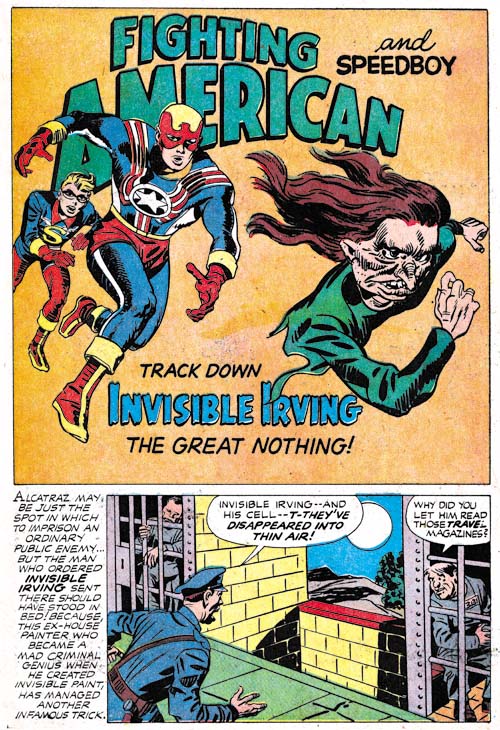
Fighting American #5 (December 1954) “Invisible Irving”
In a previous serial post on Fighting American (Fighting American, Chapter 3, Jumping the Shark) I discussed the story “Deadly Doolittle” (Fighting American #6, February 1955). That story was a rewrite of a Manhunter story from Adventure Comics #75 (June 1945). In the comments Ger Apeldoorn remarked that the “Invisible Irving” from the previous issue looked like it was reused art as well. Sometime later Lucas pointed out that “Invisible Irving” was based of the Starman story from Adventure Comics #77.
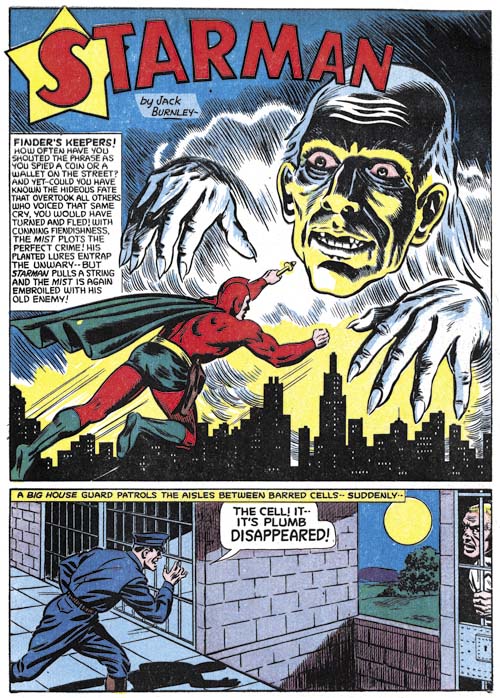
Adventure #77 (August 1942) Starman, art by Jack Burnley
A quick check of the Jack Kirby Checklist showed this fact was reported there as well. It was, however, news to me so I thought a comparison of the two stories might be of interest. The first thing that can be noticed right from the splash pages is that the text “Invisible Irving” was not lifted from the Starman story. The text was re-written for the Simon and Kirby piece. While what was said by the characters may be very similar the actual words were by no means identical.
However the plots were pretty much the same. Both start with a prison break aided by the use of invisible paint. The escape villain starts up a criminal gang that uses use planted valuables that unsuspecting passersby find and keep. T “lost” valuables then hypnotize the victims into committing crimes for the gang. The gang attacks one lady who instead of keeping the “lost” object intends to take it to the police. Fortunately she is rescued by the hero who removes the effect of the invisible paint the gang was using. However the main villain escapes only to be pursued by the hero. The hero catches up to the criminal mastermind at a windmill. Initially the villain captures the hero only to have the table turned on him in the end. The only reason I have summarized the plot here is to show how similar the two stories are. This summary applies equally well to either story.
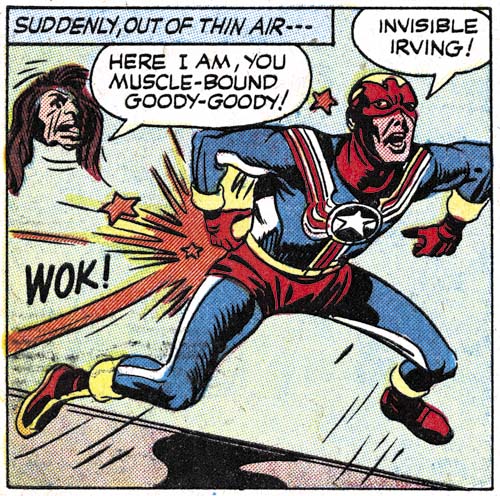
Fighting American #5 (December 1954) “Invisible Irving” page 4 panel 6
There are some small differences between the two stories. Many of the differences are due disparity between the lengths of the two pieces. Much had to be eliminated to bring the 11 page Starman story down to 6 page length for use in Fighting American. Other changes had to be made because while Starman could fly, that ability was not possessed by Fighting American. Starman also had a star-ray that could remove the effects of the invisibility solution while Fighting American had to rely on paint remover instead. Other differences have to do with the use of humor by Simon and Kirby. After the initial issues of Fighting American, Joe and Jack began to poke fun at their own creation. Scenes like the one above showing Fighting American being kicked in the seat of his pants are absent from the Starman story (or as far as I know of, from any other superhero comic book).
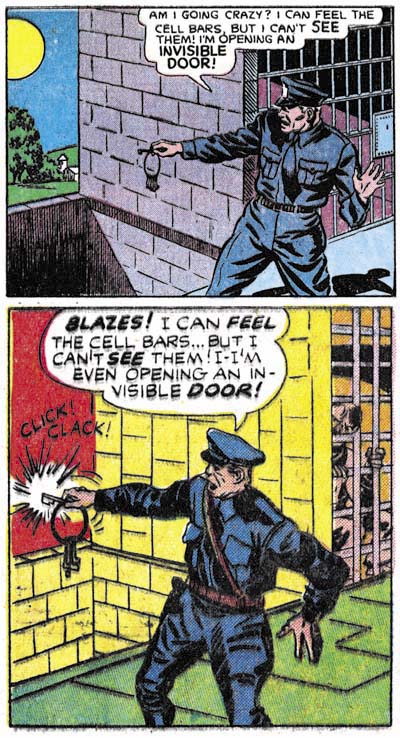
Adventure #77 (August 1942) Starman page 2 panel 1, art by Jack Burnley
Fighting American #5 (December 1954) “Invisible Irving” page 2 panel 1
Could the writer have been responsible for swiping the plot from the Starman story? After all one of the writers that Simon and Kirby used was Jack Oleck and he was known to do that sort of thing. However some of the art is so similar between the two stories that there can be no doubt that the artist was swiping from the Starman story.
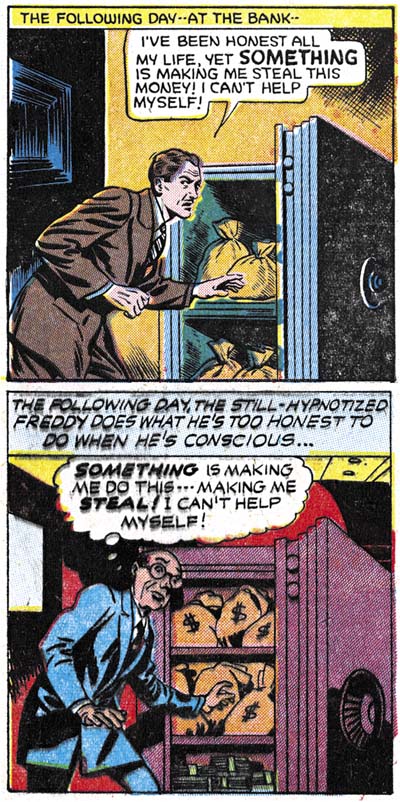
Adventure #77 (August 1942) Starman page 3 panel 7, art by Jack Burnley
Fighting American #5 (December 1954) “Invisible Irving” page 3 panel 6
While the artist for Fighting American was clearly swiping from the Starman he was not drawing close copies. None of the figures would be mistaken for tracings. Poses were often adjusted and while the panels might portray the same events they are completely redrawn. It is the story that the artist is interested in, not help in drawing the figures.
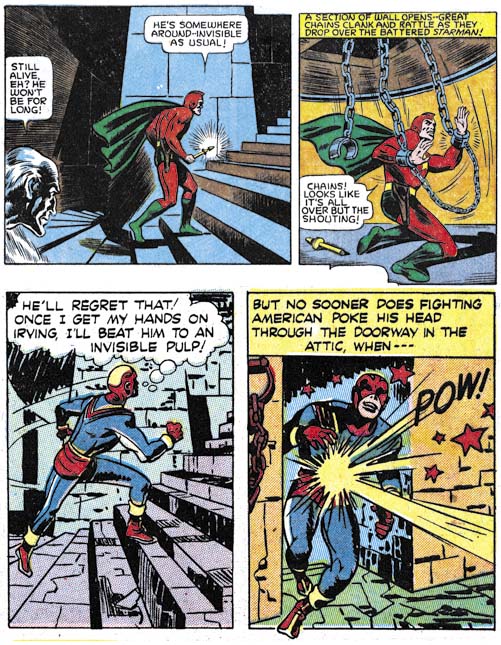
Adventure #77 (August 1942) Starman page 10 panels 3 and 4, art by Jack Burnley
Fighting American #5 (December 1954) “Invisible Irving” page 5 panels 4 and 5
Readers may have noted that I have not said who the artist was that provided the “Invisible Irving” story. I do not remember anyone that previously credited this story to an artist other than Jack Kirby. However prior experience indicates that once it has been shown that some Simon and Kirby piece was swiped it will then be attributed to Joe Simon (Jack Kirby, Fanboy). There are many who just do not like to admit that Jack Kirby would sometimes swipe, despite all the contrary evidence that have been unearthed. If the reader chooses to now attribute “Invisible Irving” to Joe Simon, he must also credit Joe for being extremely adept at mimicking Kirby. So good that he has fooled the experts. But then again, Simon and done that before.


